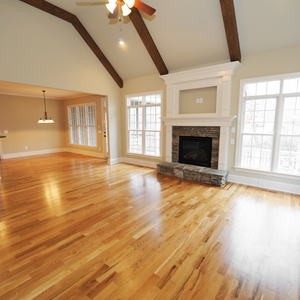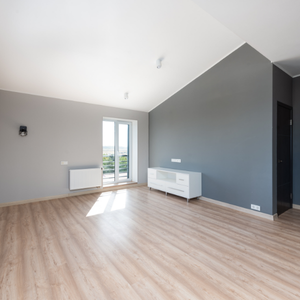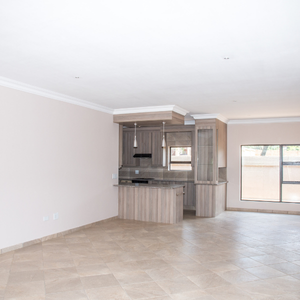
Understanding the Legal Limits for Unoccupied Homes in Saint Paul, MN
In order to understand the rules and ordinances for unoccupied properties in South Saint Paul, MN, one must explore the legal framework in depth. It is important to know that the city has systems in place to control the management of unoccupied properties.
The City of Saint Paul has adopted Regulations for the Vacant Building Registration (VBR) Program, which establishes an obligation to register for all unoccupied properties that have been unoccupied for a specified length of time. Registration also allows the city to monitor property maintenance, which helps in case properties are at risk of becoming overgrown and unkempt. In addition, compliance with the maintenance requirements is vital since problems at the property lead not only to fines, but also to legal battles.
The City of Saint Paul also conducts regular inspections to ensure adherence to sealed vacant building (SVB) safety compliance. Property owners must also pay attention to the control of essential services as well as safety systems, such as having windows and doors secured properly, sill rings, and essential services being at a minimum as per city regulations.
Compliance with any legal regulations regarding the locality greatly enhances the value that property owners are able to realize from property which is unoccupied or uninhabited while still actively serving the community. Henry Home Buyer helps ensure your vacant property remains compliant, protected, and positioned for maximum value.
Key Regulations on Home Vacancy Periods in Saint Paul, Minnesota

In Saint Paul, Minnesota, homeowners have to manage several critical rules regarding home vacancy periods as part of their responsibilities. With the intent to control unattended houses, the city has put in place measures to control the frequency of unattended houses to avoid potential risks of vandalism, neglect, and depreciation in neighborhood property values.
Homeowners must report to the city’s Department of Safety and Inspections if the home has been unoccupied for more than 30 days. To report the property, the homeowner has to submit the property details containing the vacancy’s maintenance blueprint.
In addition to the orderly maintenance of the property, the property owner has to make sure that the property is adequately secured and free of hazardous public risk. Not adhering to the aforementioned regulations would result in fines or the city taking legal action.
To ensure compliance with the city’s maintenance and safety codes, city officials may conduct inspections of the property. These regulations are very important for property owners to know, as the city’s penalties can be avoided and their investments protected.
Important Considerations for Leaving Your Home Unoccupied in Saint Paul
Property owners must understand local regulations and take appropriate steps when vacating a house in Saint Paul to ensure compliance and security. An essential consideration is applying to the city for a vacant building registration, especially if the home is to be left empty for a long period.
This registration allows the city to keep track of unoccupied houses and help prevent safety concerns, such as vandalism or break-ins. Moreover, maintaining insurance coverage designed specifically for vacant homes can help mitigate the risk of unoccupied damage.
Missing in this description is the fact that the homeowner must also look after unoccupied houses regularly to tackle maintenance issues in a timely manner. Ensuring utilities are properly managed, be it active or winterized, can protect the house from weather-related damage, such as frozen pipes.
With a proper understanding of these summary points, homeowners are better equipped to manage their unoccupied houses in Saint Paul and reduce prospective liabilities.
Tips for Securing Your Unoccupied Property in Saint Paul, MN
Understanding details such as the regulations and the safeguarding steps which can be taken is essential while attempting to secure your unoccupied Saint Paul, MN property. Begin the process by ensuring that there is no unoccupied entry points such as doors and windows which can be accessed with low grade locks.
To monitor suspicious activity, consider getting a holistic security solution that covers surveillance cameras and motion detectors which can track movement round the clock. Furthermore, ensure to regularly maintain the property by trimming the lawn as well as making sure that no mail or newspapers are piling up as these are clear signs of vacancy.
The neighborhood watch can provide that extra layer of monitoring which can be useful as the neighbors can discreetly monitor the property and inform the owner or even the police if something is wrong. Moreover, the retain intruder timers to turn on the lights can be utilized so that the lights can be activated during evening hours so as to provide the illusion of occupancy.
Make sure to review the corresponding sections of Saint Paul’s regulations on vacant properties to prevent getting fined. Moreover, these laws are tailored to the border laws of the country and are conceived to protect the neighborhood.
Insurance Implications of Long-term Home Vacancy in Saint Paul, Minnesota
In Saint Paul, Minnesota, property owners need to know about the insurance ramifications of leaving a home vacant for a long time. Most homeowners insurance policies have a time limit after which the coverage offered will not be adequate for the home’s potential risks.
Vacant properties are seen as a higher risk for vandals, burglars, and other damages, such as leaking water or fires going unnoticed. Therefore, homeowners in Saint Paul need to notify their insurers if the home will be uninhabited for longer than what is usually accepted, for example, one or two months.
Depending on the provider, owners most likely will have to pay for extra coverage or a specialized vacant home insurance policy in order to be fully covered. Such policies typically contain standard clauses for uninhabited homes.
Taking the right steps to acquire adequate insurance will curb unnecessary expenses and ensure compliance with local laws regarding vacant properties in Saint Paul.
Factors Affecting Vacant Home Security in Urban Areas
Abandoned properties in Saint Paul, Minnesota, have the potential to affect the real estate market both at the local scale and beyond. Properties that sit idle for long periods tend to face the consequences of a lack of maintenance, which leads to a decline in appearance, safety issues, and the risk of vandalism or squatting.
Such decline directly leads to exacerbated issues in the surrounding properties, as prospective buyers will anticipate increased risk along with neighborhood decline, thereby reducing desirability. Furthermore, unoccupied properties add to the already existing surplus in the housing market, which poses a threat to the sellers by reducing prices through increasing supply with unfavorable demand.
Regulations are in place to curb the problem by fines or inspections that promote maintenance and enforcement, but enforcement tends to be inconsistent which leads to varying community standards and the impact the surrounding area faces. For homeowners and real estate investors, especially in the dynamic real estate market in Saint Paul, understanding the effect of vacancy on real estate value enables them to navigate the regulations.
How Vacancy Affects Real Estate Value in Saint Paul, MN

Abandoned properties in Saint Paul, Minnesota, have the potential to affect the real estate market both at the local scale and beyond. Properties that sit idle for long periods tend to face the consequences of a lack of maintenance, which leads to a decline in appearance, safety issues, and the risk of vandalism or squatting.
Such decline directly leads to exacerbated issues in the surrounding properties, as prospective buyers will anticipate increased risk along with neighborhood decline, thereby reducing desirability. Furthermore, unoccupied properties add to the already existing surplus in the housing market, which poses a threat to the sellers by reducing prices through increasing supply with unfavorable demand.
Regulations are in place to curb the problem by fines or inspections that promote maintenance and enforcement, but enforcement tends to be inconsistent which leads to varying community standards and the impact the surrounding area faces. For homeowners and real estate investors, especially in the dynamic real estate market in Saint Paul, understanding the effect of vacancy on real estate value enables them to navigate the regulations.
Legal Implications of Long-term Property Vacancies
For homeowners in Saint Paul, knowing the practical consequences of long-term vacancies in property is critical. The city has certain measures in place to prevent abandoned properties from becoming unsafe and a nuisance to the public.
The city’s Department of Safety and Inspections require homeowners to register vacant properties, with a fee attached to it. Ignoring this directive comes with its own set of consequences, including hefty fines and penalties.
In addition to this, the property’s owner is subject to safety and code compliance inspections. Moreover, long-term vacancies can negatively affect the property’s insurance status, with many insurance companies enforcing higher premiums or outright denying coverage for unoccupied houses.
Homeowners need to remain vigilant that a city can step in and take action—such as enforced cleanups and repairs—on a property that is neglected, abandoned, and in disrepair. Mastering these regulations is essential for homeowners who want to effectively advantage their vacant properties while avoiding the legal and financial repercussions of non-compliance. For those looking to avoid these risks entirely, you can also sell your home for cash in Saint Paul or nearby cities, offering a fast and stress-free way out.
How to Notify Authorities About Extended Home Absence in Saint Paul
Notifying local police authorities is mandatory for compliance and security purposes when planning an extended absence from your residence in Saint Paul. This step includes notifying the Saint Paul Police Department or your local precinct regarding the status of your home as vacant.
This enables the police department to step up patrols in the area and keep an eye out for any unusual activity focused on your house. This is done via the House Watch Request form which collects relevant information for the absence period including emergency contact details of your absence, and tailored instructions for the property’s access.
In parallel, it is a good idea to speak to a few neighbors whom you trust so that they can keep an eye on any uncommon activity. Taking the initiative to talk to both the authorities and to the neighbors is useful not only for maintaining the home, but also for compliance to the policies of unoccupied houses in Saint Paul.
Essential Preparations Before Leaving Your Home Vacant in Saint Paul
When планounty unattended properties or preparing for an extended absence from your home in Saint Paul, it is imperative to understand and comply with local laws and make suitable preparations to mitigate the risk of harm to your home. Start with the verb “ to understand” verb phrasing Saint Paul’s policies regarding unattended properties, which might include automated notifications to local enforcement or the registering of the unattended domicile.
Your vacant building’s security is very important; installing security fences, upgrading locks, applying high-security windows and or doors, installing security cameras, and or monitoring systems for windows and/ or doors all act to prevent break-ins and acts of vandalism. Snow removal, lawn maintenance, and frequent inspections of vacant property to curb the telltale signs of neglect should also be planned for at a minimum.
Additionally, verify and update, if required, your homeowners insurance to make certain coverage against vacant homes, either improperly occupied or vandalized, is protected. Moving deactivation to unoccupied thermostats and utilities can be set to prevent damages that might occur during extreme weather conditions, which is common in Saint Paul.
By adopting these measures, while complying with the law, your property can be safe during its vacancy. Alternatively, you can sell your home for cash in Inver Grove Heights or nearby cities to avoid the risks and responsibilities of managing a vacant property.
What Is the Rent Control Ordinance in St Paul, MN?
The rent control ordinance in St. Paul, MN, is particularly critical for owners of property to grasp in view of the context surrounding vacant properties.
To control the market for rentals and to mitigate the undue burden of steep increases in rent, this ordinance increases the rent a maximum of 3 percent annually. Attention must be given to the fact that the rule is in place regardless of tenant changes and that there is a persistently new lease system, the cap shall remain in place.
These conditions help to define a critical planning window for landlords who own vacant units and plan to fill them in the foreseeable future. Additionally, landlords are required to enhance the cap with significant operational increases or the rising operational costs of services to enhance transparency, with landlords explaining the increases.
These fixes may appear to be cumbersome, however, without them, the rental market in St. Paul becomes futile and devoid of any profits—much like neglecting the importance of fixing up a house to sell for maximum return.
For owners of vacant properties, understanding this particular rent control ordinance will enable more enhanced completions of the strategies in the real estate market of this region.
What Is a Category 2 Home?

In the case of Saint Paul’s regulations on unoccupied homes, a Category 2 home is defined as a domicile that undergoes progressive dilapidation and is in need of repairs that renders it unfit for habitation and legally occupied. For property owners wishing to remain compliant with local housing regulations, it is important which zoning patterns and codes outline Category 2 homes and what the penalties are.
These homes often display moderate to severe damage, including, but not limited to, outdated electric wiring, plumbing, and damaged roofs. Owners of such homes are bound to Saint Paul’s regulations governing the rehabilitation of Category 2 homes, which include the issuance of specific permits as well as compliance with documented construction terms.
The property owner may be subjected to heightened scrutiny from the city inspectors as well as fines for not complying with the time restraints. Being familiar with and what the ramifications entail empowers the property owners in Saint Paul to manage their unoccupied homes effectively and improve compliance with the city’s housing regulations while positively contributing to the housing rehabilitation agenda of the city.
How Long Can You Leave a House Vacant?
In Saint Paul, it is important for homeowners to understand how long they can leave their house empty to comply with local laws and avoid penalties. The City of Saint Paul has specific laws regulating idle properties which require homeowners to register their properties if such properties remain unoccupied for an extended period.
Usually, homeowners must register with the city’s Vacant Building Program if a house is empty for more than thirty days. Non-compliance can lead to fines and registration penalties.
Increased taxes on the property, mandatory inspections, or even a forced sale if it’s deemed a public nuisance are all possible issues for homeowners who do not properly register their house. Furthermore, maintaining insurance coverage on a home deemed unoccupied is imperative to mitigate risks of vandalism or water damage.
Staying in the know with the outlined rules and regulations can help a homeowner avoid house vacancy-related issues in Saint Paul.
Wondering how long you can leave your house vacant? Extended vacancies can lead to insurance issues, maintenance problems, and even decreased property value. If you’re not living in the home and don’t plan to soon, it might be time to consider selling. Henry Home Buyer is here to help. You can sell quickly, avoid costly repairs, and enjoy a hassle-free process. We offer fair cash offers and handle all the details. Contact us at (612) 430-8822 for a no-obligation offer. Get started today!
Helpful Saint Paul Blog Articles
- Selling Your Home In Saint Paul, MN, Before Divorce
- Sell Your Home Needing Repairs Quickly in Saint Paul, MN
- Sell Your House At Auction In Saint Paul, MN
- Selling A House With Foundation Issues In Saint Paul, MN
- How To Sell Your Parents’ House In Saint Paul, MN
- For Sale By Owner Homes In Saint Paul, MN
- Selling Your Apartment In Saint Paul, MN
- Home Short Sale In Saint Paul, MN
- Saint Paul, MN Regulations On Unoccupied Homes
- Heir’s Consent For Estate Property Sales In Saint Paul, MN
- Can You Sell a House with Tenants in Saint Paul, MN?
- Taxes When Selling an Inherited House in Saint Paul, MN
- Capital Gains Tax After Selling Your Home in Saint Paul, MN
- Saint Paul, MN Neighborhood Map
- Saint Paul, MN Property Tax Rate
- Free Things to Do in Saint Paul, MN

| LANDLORD AND TENANT | RENTAL HOUSING | RENTAL PROPERTY | COURT | LEASES | TENANCY |
| SUBLEASE | PERIODIC TENANCY | FEE | HEALTH | ACTUAL DAMAGES | ACTUAL DAMAGES |
| ATTORNEY’S FEES | ATTORNEY FEES | MONEY | OWNERSHIP | STATUTE | EXPENSES |
